Rasam is a regular part of the meal at any South Indian household, served with rice and usually a dry curry and appalams. It is gaining popularity in other parts of India as a form of Soup, rather than with rice and curry. There are many versions/ varieties of Rasam, all of them tasty. The addition of fresh herbs such as coriander and curry leaves to this Lemon Thyme Rasam enhances the taste and adds to the health quotient.
Here is the link on this blog for my recipe for a traditional homemade rasam powder from a Tamilbrahm kitchen, and a recipe for tomato rasam using the rasam powder of the earlier recipe.
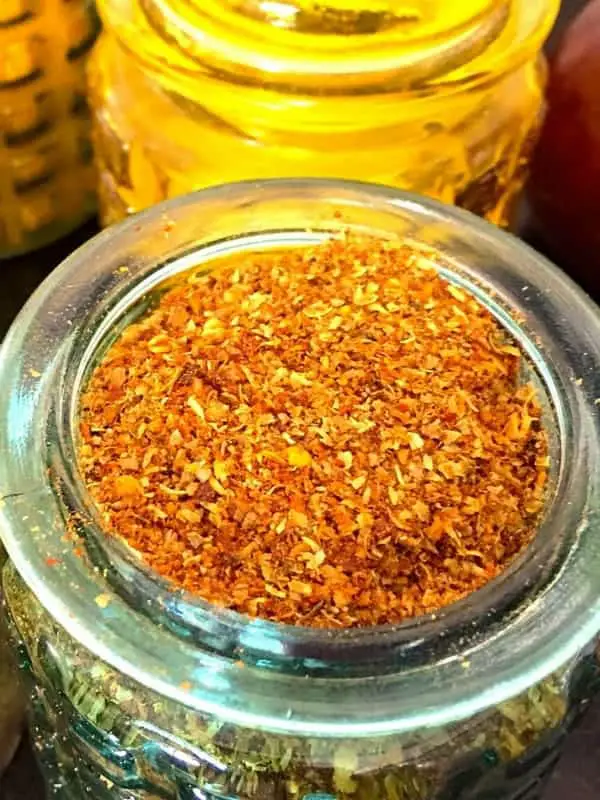
This one though, is a twist on the regular rasam - a Lemon Thyme Rasam. Purists may find the idea unappealing, so I will just say, don't knock it till you have tried it! Apart from the flavour added by the thyme, the added nutrients and disease fighting properties are worth looking into. Thyme has many uses in medicine, eg as a diuretic, a stimulant for the appetite, to bring down stress, as a germ killer in mouthwashes, etc.
You may want to reduce the quantity of thyme added to the Lemon Thyme rasam - I have suggested 1 tablespoon for 3 cups of water, however you could first try with half a tablespoon and then add more depending on how strong you want the thyme flavours to be.
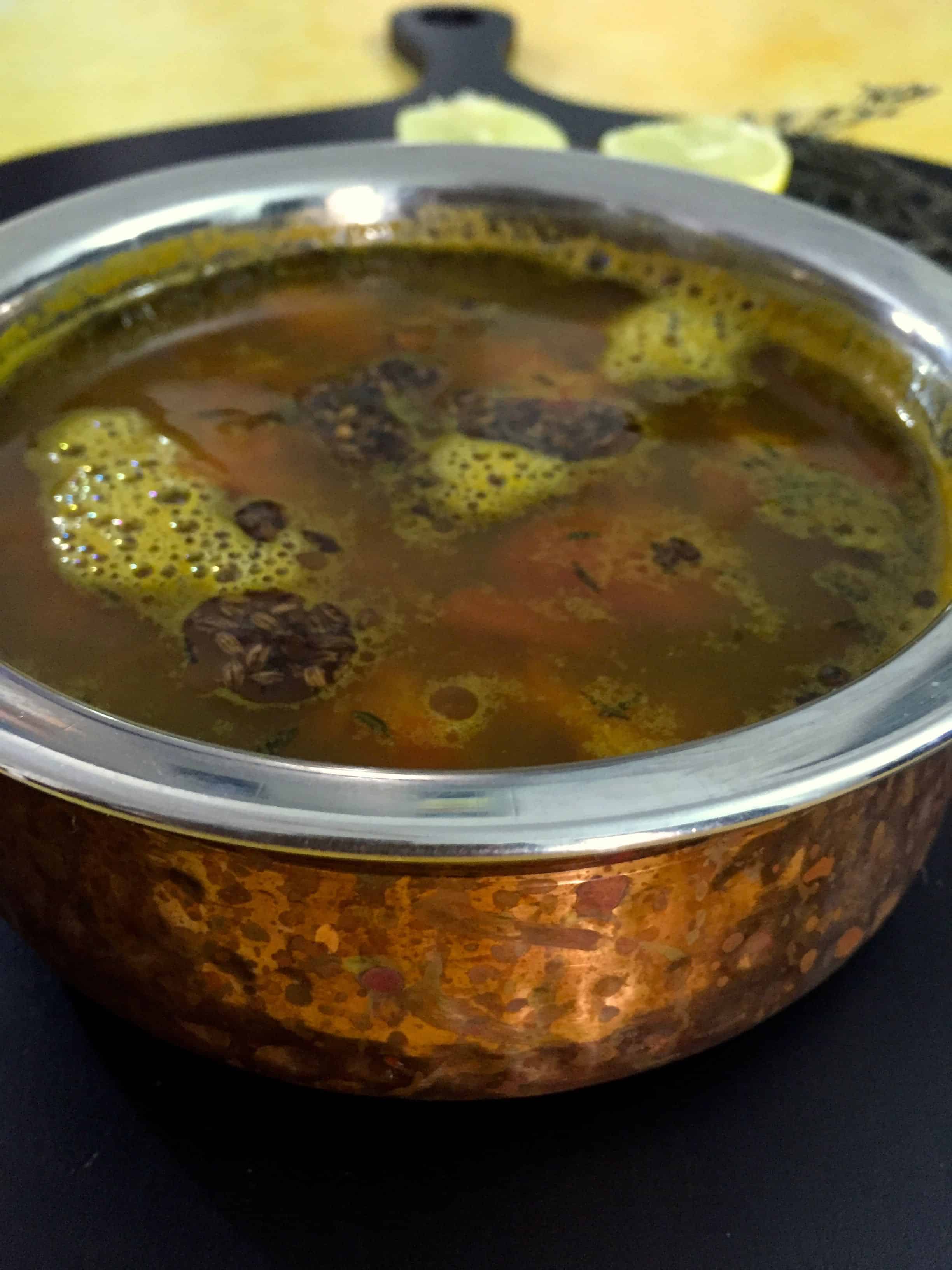
Thyme is a herb with several properties which aid in good health. Thyme contains flavonoid phenolic antioxidants like zea-xanthin, lutein, pigenin, naringenin, luteolin, and thymonin and the fresh leaves have high antioxidant levels. Packed with minerals and vitamins thyme leaves are one of the richest sources of potassium, iron, calcium, manganese, magnesium, and selenium, as well as a rich source of vitamins such as B-complex, beta carotene, vitamin-A, vitamin-K, vitamin-E, vitamin-C, and folic acid. Thyme also has vitamin B-6 or pyridoxine; pyridoxine keeps up GABA (beneficial neurotransmitter in the brain) levels in the brain which has a role as stress buster.
Thyme, like most herbs, has been in use since ancient times. The Romans treated melancholy with thyme, while it was popular with the Greeks in incense as well as being a symbol of elegance and courage. With origins in the Mediterranean area, the cultivation of thyme has spread across the world and was brought to North America by the first colonists and used both as a food preservative and as a medicinal herb. Thyme was also grown in European monasteries in the Middle Ages, for use in cough medicines and as a digestive aid.
Though the herb is said to have no known side effects, like any other food, thyme should be consumed in moderation, specially during pregnancy. Which means, during pregnancy it is better to use it as as seasoning, sprinkle it in soups and stews and on meat, but not steeped in teas etc.
The Lemon Thyme Rasam from this recipe uses fresh thyme. The thyme leaves should be stripped from the tough stems. They tend to scatter, so I always keep a clean large bowl to catch the leaves as I remove them from the stems. However dry thyme can be substituted if fresh is not available, though the quantity should be reduced to ½ a tablespoon instead of 1 tablespoon of fresh leaves.
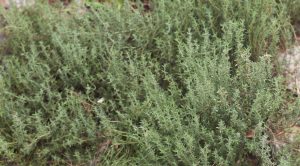
Thyme has a strong, pleasant aroma. Just making the Lemon Thyme rasam gives me a feeling of euphoria and well being. An unusual ingredient to add in a traditional item such as rasam, but the thyme does take it to another level. Being good for alleviating coughs and sore throats, it may be added to the pepper (millagu) rasam which a favourite when one is feeling under the weather. A dash of lemon juice at the end, and this quick and easy dish is ready!
You may like to try these other Rasam Recipes on the blog:
Festive Pineapple Rasam
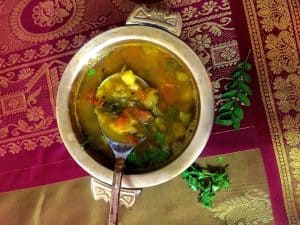
Easy Tomato Rasam
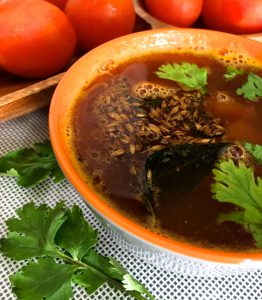
"Recipe"
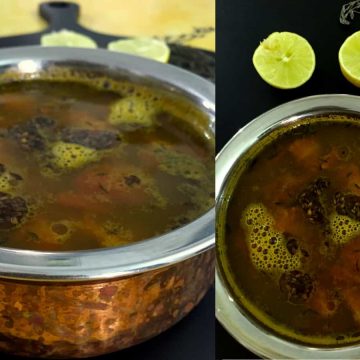
Lemon Thyme Rasam
Ingredients
- 1 tablespoon Tamarind pulp or a Lemon sized ball
- ¼ cup thowar dhal pigeon pea lentils
- ¼ teaspoon turmeric
- 1 cup Diced Tomato
- 2 teaspoon rasam powder Link to recipe given in post above and in notes
- ½ teaspoon cumin powder
- ½ teaspoon pepper powder
- ¼ teaspoon asafoetida hing
- 1 tablespoon thyme leaves ½ tablespoon if using dry thyme
- a few curry leaves
- 3 ½ cups water
- salt to taste
- 1 tablespoon lemon juice or juice from one lemon
For Tempering
- 2 tsps ghee
- ½ teaspoon Mustard seeds
- ½ teaspoon Cumin seeds
- 2 curry leaves minced
Instructions
- Soak the tamarind (about the size of a large marble or a small lemon) in 1 cup of water. It is best to make it into a ball and then soak in water, so that it is easily discarded once all the juice has been extracted.
- Wash the dhal (pigeon pea lentils) and add the turmeric powder.Pressure cook till the dhal is soft, in 1 ½ cups of water. Cook it for 2 whistles. Leave the cooker to release pressure on its own, as the dhal will continue to cook during that time.
- Dice the tomato, mince curry leaves and strip the thyme leaves from their stems. To make the rasam: Start once the cooker is ready to be opened.
- Extract the juice of the tamarind by crushing it in the water in which it is soaked. Strain the tamarind extract into a bowl, checking that there are no pieces of tamarind pulp or seeds, and pour into a pan. Set on the stove and turn the stove on. Add ½ cup of water to the tamarind pulp and squeeze out any remaining juice. Add to the pan on the stove. Discard the used tamarind pulp.
- To the tamarind extract on the stove, add chopped tomatoes, rasam powder, cumin powder, pepper powder, asafoetida powder, a few curry leaves and salt. Curry leaves are very good for health but we generally discard them on the plate. I mince them so that they and their nutrients are consumed along with the rasam.
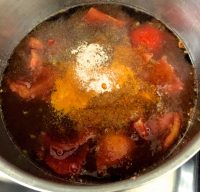
- Add the thyme leaves. I have suggested 1 tablespoon for 3 cups of water, however you could first try with half a tablespoon and then add more depending on how strong you want the thyme flavours to be. If using dry thyme, then take just half of quantity suggested for fresh leaves.
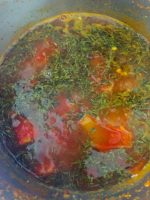
- Bring the thyme rasam to a boil and then reduce the stove to low flame. Let the rasam simmer for 5 minutes so that the raw taste of the chilli in the rasam powder disappears.
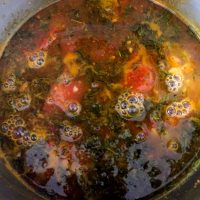
- Take the cooked thowar dhal and mash it well in its own liquid. Pour into the rasam with ¼ glass of water. Bring to a boil, keeping it boiling for 2 minutes. Simmer on low flame for 3 minutes. Taste for correctness of salt. Remove from the stove.
- Keeping the stove on low flame, heat ghee in a small tempering pan, add mustard seeds and let them burst. Add cumin seeds and after 5 secs, add the chopped curry leaves and turn off the stove. I love the crackle and aroma of fresh curry leaves in hot ghee!
- Pour the ghee tempering on the rasam and keep the pan covered. Serve hot with rice and ghee, a dry curry and papad. Or serve hot as Soup Add freshly squeezed lemon juice just before serving. Lemon does not take kindly to heating, so add the juice only to portion being served so that any left over rasam may be reheated and served with a dash of lemon juice later on.

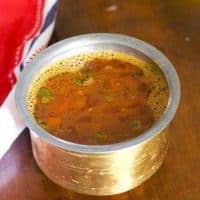
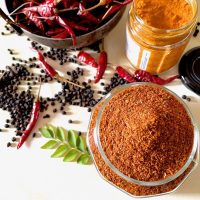
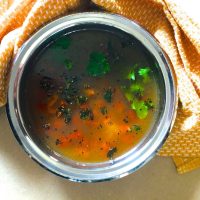
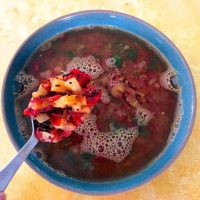
Shruthi Subramanya says
Lemon thyme rasam is a different taste.Till now I have not tasted it....Full and finally it gave taste fresh and sour taste of tamarind,. Nimboo and thyme leaves.thanks for the recipe Sujatha ma'am😉
Paluk Khanna says
an innovative twist I must say !!
Sundari Giri says
Innovative, the thyme will give a different and refreshing taste to the rasam
Sujata Shukla says
Thank you Sundari. It has a refreshing taste, while still being 'rasam'!